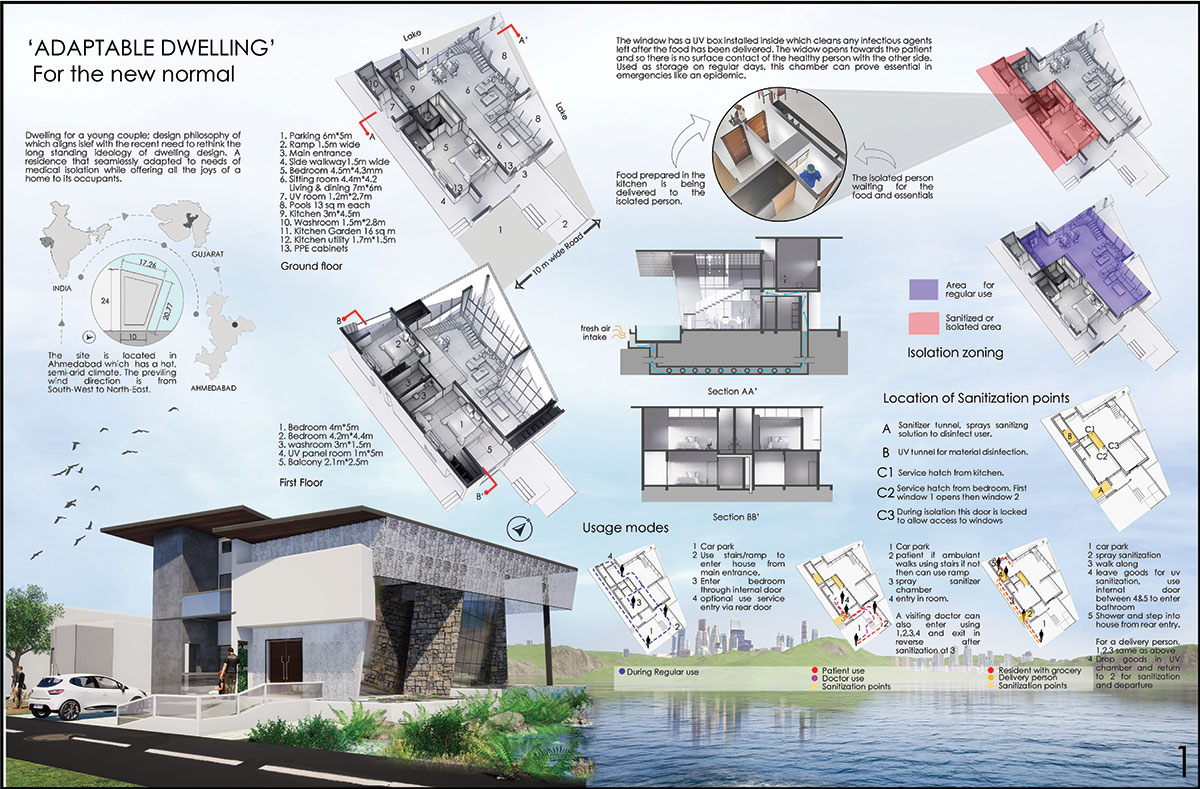
Humans are adaptive species; lessons learnt from the pandemic would certainly lead to changes in the built environment. For starters, all areas that see large number of people gatherings, like airports or transit nodes, will be forced to think of new design strategies accommodating social distancing norms
Many contraptions like sanitization tunnels and UV disinfection boxes came to be used during the peak Covid period, leading to a common belief that we will see these devices as mainstream design interventions. However, these quick-fix solutions still have a lot of validation pending for their long-term impacts on human health.
Sustainability and eco conscious buildings have been spoken about for a long time. With the pandemic they have gained more momentum especially with regards to human health. Ventilation rates and air change per hour are trending to ensure that the building is flushed out of contaminated air as soon as it can be.
There has been a lot of movement in prefabricated structures.
Prefabrication provides easy and quick buildability, minimizes extended construction periods, and reduces person to person interaction while constructing. Composite building materials have also been gathering a lot of momentum. Needless to say, everyone wants materials that discourage microbial growth and pathogens to sustain around humans. As noble as this idea is, we need to understand that not all of them are bad and we have coexisted with them for centuries.

Adaptation of buildings and architecture to address issues bought about by pandemic should not be piecemeal.
Design should serve its purpose at the unit level and also at the community level so that they could integrate and form a system level intervention. A befitting example of such a systems level intervention would be the case of common amenities in societies like the club house. This building is integral to housing societies, many of them have now started contemplating building of a clinic to serve as isolation areas to integrate healthcare at a community level.
Further, a consensus for increasing wall window ratio is trending among designers. Homes with an arrival vestibule and quarantine closet to store online shipped items and grocery deliveries have also started to gain importance in the real estate lobby. Buildings and cities slowly but constantly adapt to the ambient, be it climate, force of nature, or pandemic situations. While a lot of momentum is seen as pandemic-proof design domain, only time will state which of the interventions see a permanence in the life of the users.















